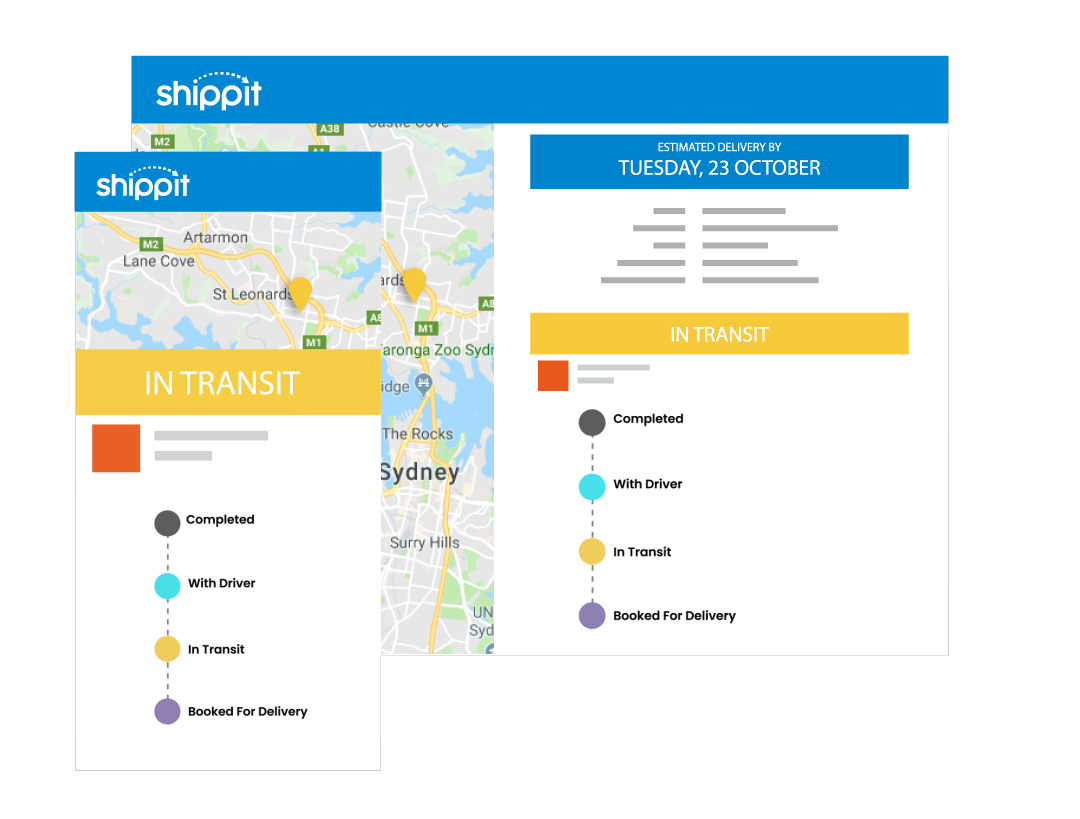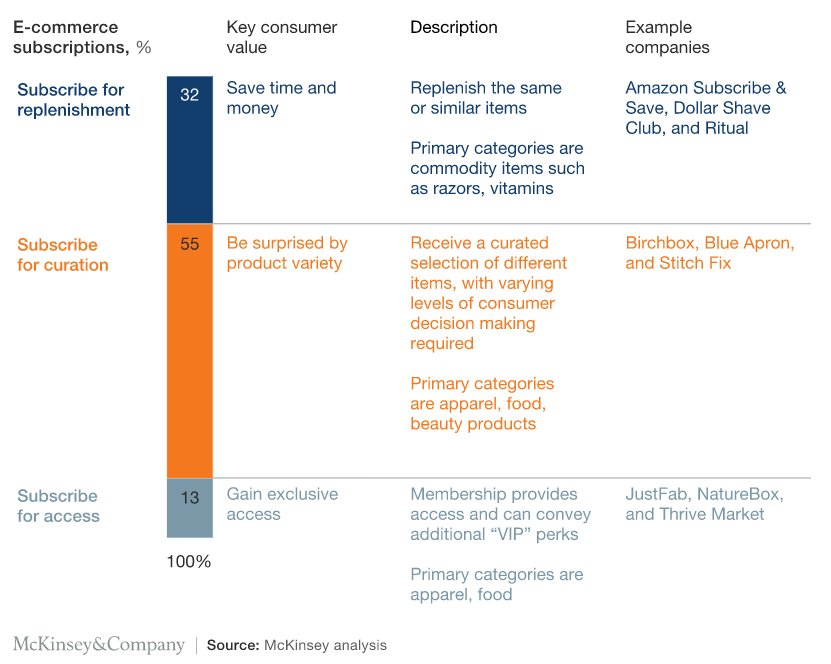Remember the days when you could send off a form from the back of a TV guide, and in return receive a collection of CDs every month? That’s what often comes to mind when people think of subscription shopping – a mode of shopping where you receive a selection of products on a regular basis.
Subscription shopping went out of fashion for a while as eCommerce gained popularity, but in the last five years, subscriptions have made a comeback. In fact, subscription services are now one of the fastest growing methods of online shopping. From books, candles and vitamins, to wine, craft beer, fashion and food, everyone is getting in on this opportunity. And there are brands that are absolutely smashing it thanks to their user-friendly, cost-effective subscriptions – think Hello Fresh, Dollar Shave Club, Bellabox, Who Gives A Crap, and Rent the Runway.
Research by McKinsey & Company has shown that 15 per cent of online shoppers have signed up for one or more subscriptions to receive products on a recurring basis. The largest retailers generated more than $2.6 billion in sales in 2016 from subscription services, making it a market that has grown more than 100 per cent in the last five years.
So who exactly is subscription shopping? They are often younger to middle-aged people with a reasonable level of disposable income, who enjoy a convenient, personalised experience with their favourite brands. There’s also a higher percentage of women than men interested in subscriptions.
Subscription shopping tends to fall into three categories – replenishment (automatic repurchasing of common items like nappies, toilet paper or shampoo), curation (highly personalised collections that delight with new products, most likely fashion and beauty), and access (rewarding loyalty by offering a lower monthly fee or members perks, largely fashion and food).
The research showed curation subscription shopping was by far the most popular, indicating a desire for personalised service. Cost played an important role, with relatively low monthly fees attracting more customers. Offering varying levels of subscriptions was also popular, allowing consumers to test the waters before signing up for the more expensive option.
If you’re thinking this sounds like a win-win opportunity and are ready to jump on board, just keep in mind that the cancel rates for these services are high, so retailers need to make sure they are constantly attracting new customers.
It can be hard work to convince a customer to hand over their credit card details for an ongoing payment – only 55 per cent of those who consider a service ultimately sign up – so you have to be sure to deliver an exceptional end-to-end experience. You won’t be able to get away with bundling up end of the line products or last year’s stock either – as a reward for committing to a subscription, customers expect tangible benefits, whether it be convenience, lower costs or increased personalisation. Poor product quality, a perceived lack of value, or dissatisfaction with the selection will have customers cancelling their deliveries in a flash.
Word of mouth becomes incredibly important in this model of eCommerce, so you’ll need to encourage reviews and sharing across social media platforms. For this to happen organically, subscriptions need to be either supremely useful, well presented, or innovative and next-level awesome.
A good subscription service will tailor their products over time to suit the need of the customer. People love having the ability to pause the service when they want to or to increase or decrease the amount of product to match their actual requirements.
The cost of replacing lost subscribers can quickly deplete cash reserves and require a larger commitment to marketing. The higher the churn rate, the harder it is to cover acquisition costs and scale revenues. And early cancellation rates among new customer mean you really need to think through the benefits of offering free trials or heavy discounts.
While subscription models definitely have their challenges, there is a lot of room for growth in this market. If you’ve got the right products, an easy and convenient sign-up process, and offer an exceptional personalised service, there’s an opportunity to take advantage of this new way of shopping to accelerate growth and profitability.


